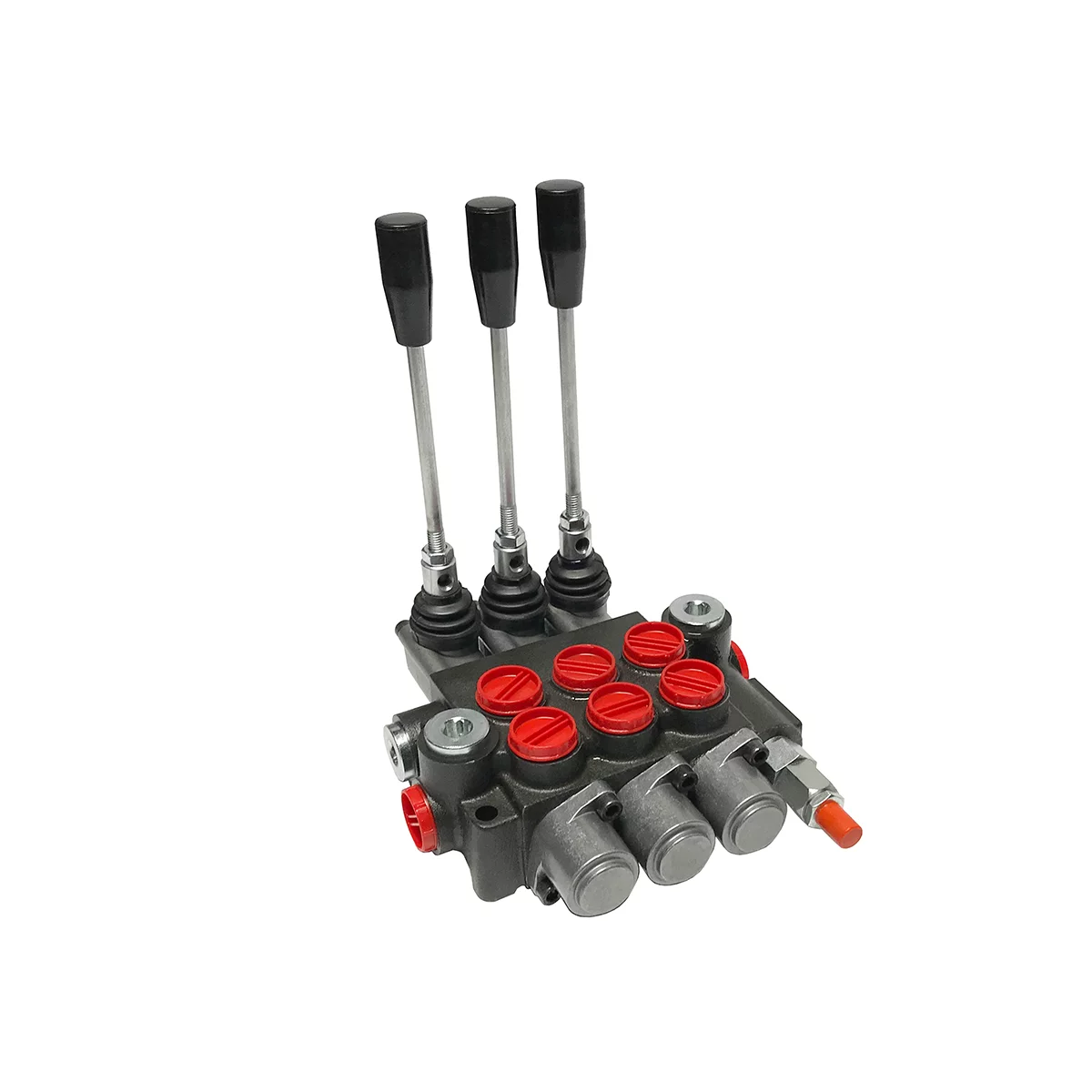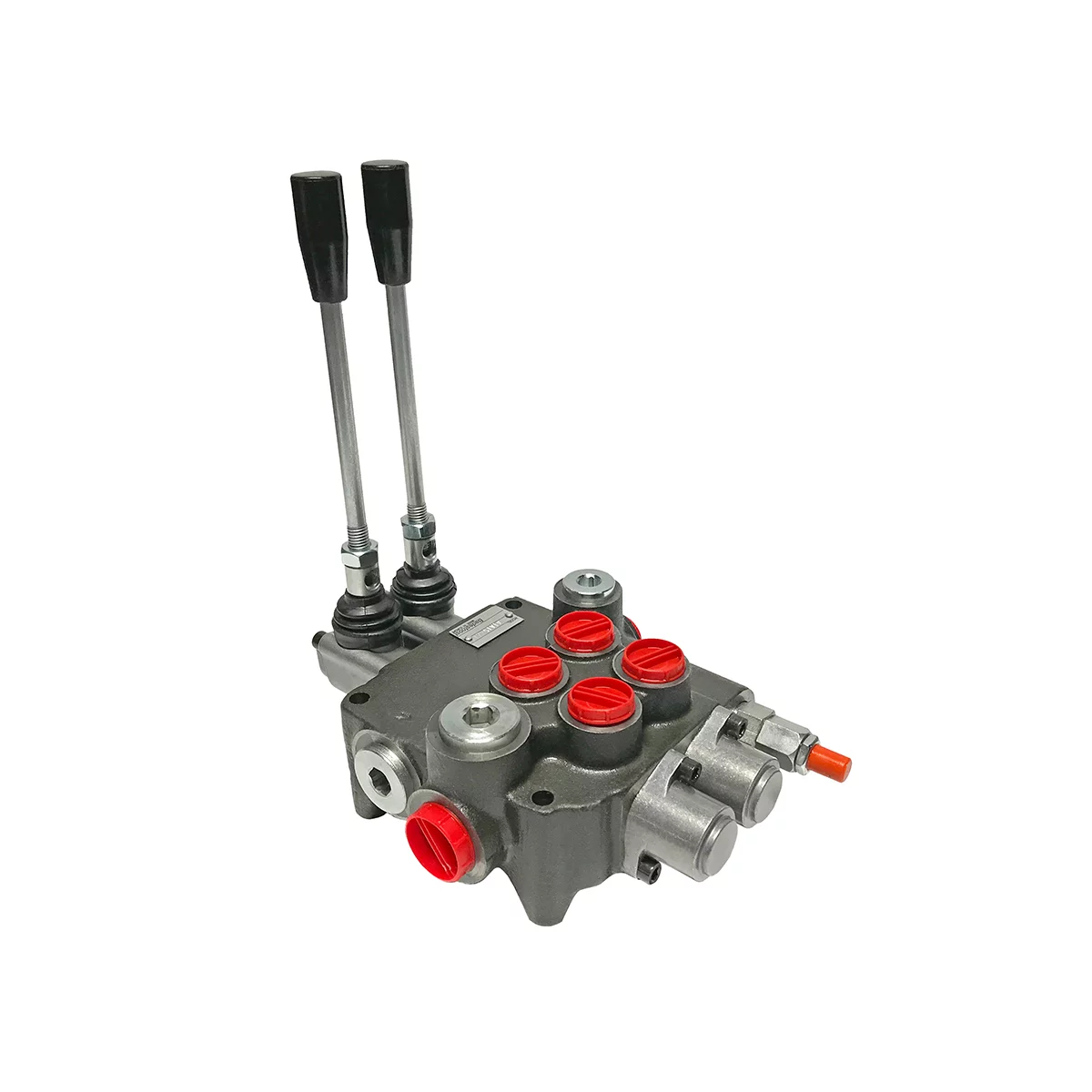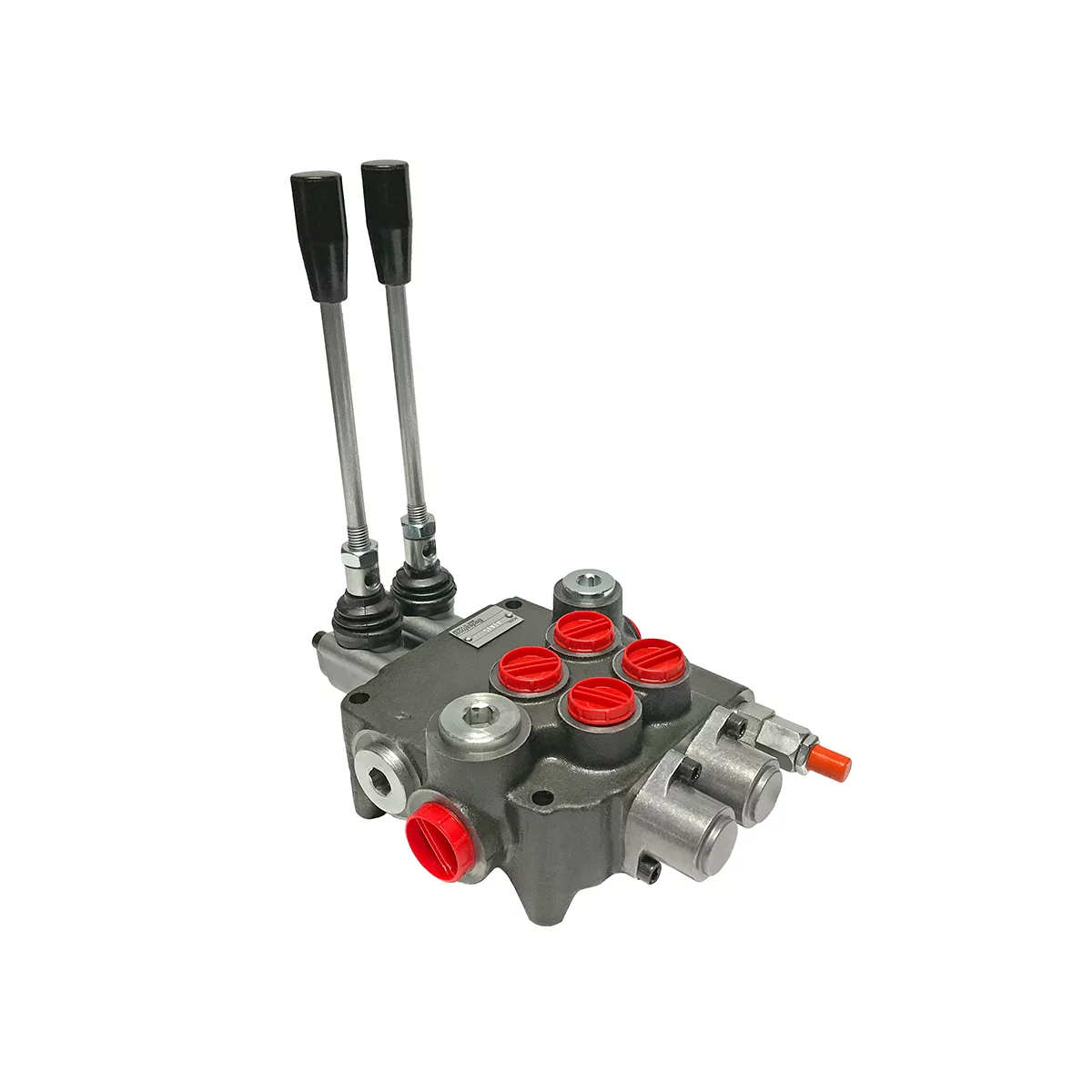There are many agricultural tools and machines that employ hydraulics for smooth work. And note that a tractor is among these powerful and sturdy machines that rely on the sheer power of hydraulics.
Many people are familiar with hydraulics and hydraulic systems; however, how many among us really know and comprehend how hydraulics work and operate in the tractor loader? Keep in mind that the components and parts of a typical hydraulic system comprise a reservoir, many valves, and a pump. And it’s worth noting that hydraulic control valves and other parts can operate in a system that accurately directs or controls liquid flow.
Hydraulic control valves for tractor loaders are an irreplaceable part that’s used in various kinds of machines in several industries. For example, it is the basis of activity in agriculture and construction. It is hard to imagine modern excavators, tractors, and loaders without a hydraulic control valve.
Hydraulic Valve Defined
We can say that a hydraulic valve is an effective mechanical device that regulates the fluid flow within a specific hydraulic system or circuit. Did you know that you can also use it to completely close a line, redirect pressurized fluid, or even control the degree of flow to specific areas?
Hydraulic valves are usually used in hydraulic power packs in order to direct the fluid either from or to a hydraulic cylinder. Hydraulic valves are important as they help control and regulate the amounts and directions of fluid power in a circuit by closely controlling and tracking the flow rate and pressure in various components of the circuit.
Keep in mind that hydraulic valves in a tractor must be capable of withstanding a high degree of fluid pressure. And it’s because the nature of many contemporary hydraulic systems means high pressure values of 3,000 PSI or even more.
Remember that the hydraulic system in the machine has to lift the bale, the load of dirt and the bale fork. So, even a small tractor’s hydraulic system is usually under massive pressure.
As a result, they are usually constructed of iron or steel. The material should have sufficient strength to withstand continuous and extreme operation under pressurized conditions. Also, the hydraulic reservoir is typically used for storing non-pressurized hydraulic fluid.
How a Hydraulic System Works on a Tractor?
Before learning how to add a hydraulic valve to your tractor, you must know and appreciate how a hydraulic system typically works on any tractor. Note that the hydraulic system works with the help of pumps. These pumps are essential and transfer the fluid from the hydraulic system’s big reservoir to the tractor’s hydraulic system.
And this process raises the level of energy. This is done by gradually raising the pressure. And the motor inside your tractor is the primary power source for pumps. The fluid, or liquid, is under intense pressure and acts on both the piston and rod inside your cylinder.
You should know that each cylinder stroke is important as it converts the fluid power, also called pressure, into valuable mechanical force. The oil level in the reservoir will gradually fall while other parts, such as the piston and rods, extend.
On the other hand, when these parts gradually retract and move back, you will see that all the fluid will slowly get back to the reservoir. After that, you will notice the metallic walls of this reservoir start to trigger a drop in the fluid temperature by letting all the heat energy escape. This is crucial, as it reduces the total pressure in the reservoir. The operation or mechanics of a tractor’s hydraulic system work mainly based on Pascal’s law.
Adding a Remote Hydraulic System
If you attach a remote hydraulic system in order to make your tractor more efficient, it will give you the opportunity to add many hydraulic accessories. A few of them are a log splitter, hydraulic top link, blades, and hydraulic auger motor. Note that if you use an open-centered valve, then the oil will be moving along the standard route to the 3 point until someone pulls the handle on the valve.
After that, the valve may divert the oil to increase or lower your hydraulic accessory. You can reverse the oil or fluid flow to your accessory by pushing the handle in the other direction.
Hydraulic Control Valves and other Crucial Accessories for Tractors
There is no doubt that a hydraulic valve in your tractor loader is among the most integral components of this valuable hydraulic machinery. The valve is crucial. This is because it allows fluid to flow in different directions from either one or multiple sources. It’s worth noting that hydraulic valves in tractor loaders usually have a spool. We can say that the spool is encased in a cylinder that you can control either mechanically or even electrically.
Also, the movement and direction of this spool are integral to restricting fluid flow in the overall system. While it’s quite similar to any directional control valve, this particular type of valve is now extensively used in the industry for loaders.
How to Add Hydraulic Valves to a Tractor
The best thing is that it is simple to turn an old tractor, such as your garden tractor, into a capable earth-moving machine or convert its conventional manual lift system to hydraulic. Did you know that adding hydraulics can multiply a tractor’s engine power manifold?
With the help of hydraulics, you may equip a tractor with a backhoe, a front-end loader, a 3-pt. hitch, and even a dump trailer.
⦁ You should carefully and gradually depressurize the sensitive hydraulic system. It is essential that you consult and go through your specific system documentation to make this step simple.
⦁ Now remove any electrical power or energy source from your system if electric pumps are pressurizing it. You can do this by disconnecting your pump’s power connector or simply pulling its circuit breaker. However, keep in mind that some mechanically driven pumps, like engine-driven pumps, might not have electrical connectors.
⦁ You should remove your old or current valve by removing the current electrical connector. Now place a few buckets underneath the hydraulic valve in a careful manner, and then unscrew the bolts and nuts that are leading to the valve.
⦁ Carefully position your valuable hydraulic valve where it will be installed. You should plug in the fittings present on it and then cap all the ends of either the tubing system or the pipes it will connect to. You should plug all hydraulic lines. These lines may lead to or from the valve. Plugging them will minimize the risk of fluid loss. It is best to use a plastic or aluminum plug that easily screws into the fitting.
⦁ After that, ensure that your valve has a proper and adequate orientation. To ensure that, you may have to use a hydraulic schematic.
⦁ Unplug all the lines that are leading to the valve, and then it is time to connect them carefully to the brand new system valve and tighten the nuts.
⦁ You should supply proper electrical energy if it’s required to provide pressure and force to the hydraulic system. Keep checking for leaks in the system while it is under pressure. You have to understand and appreciate that liquids are incompressible, and they transmit pressure with equal force in nearly all directions.
Things to Consider
Did you know that engines in tractors, even garden tractors, have sufficient power to push hydraulic oil up to 2,000 PSI or even more? The hydraulic system you will find on all major N-Series tractors was carefully designed for plowing.
You can operate a typical control valve on your tractor loader through many methods: manually, electrically, hydraulically, and pneumatically.
You may know that manual valves now tend to work with simpler and easier paddles or levers. These are popular in cases where an operator tends to apply force in order to run the valve. Sometimes, they leverage spring force in order to recover the unique position of this valve.
Conversely, electric hydraulic valves for tractor loaders use electromechanical solenoids for carefully sliding the spool. As the uncomplicated application of electric energy offers much-needed control, these valves are now popular.
However, remember that electric solenoids can’t generate huge or massive forces unless you supply them with considerable amounts of electricity. Did you know that heat generation tends to pose a notable threat and risk to extended and long-term use of the valves? So, many now have a rather limited cycle.
New Tractors and Using Live Hydraulics
Many N-Series tractors, such as the 9N and 2N from Ford-Ferguson, now use a 2-stage clutch. Some even use an efficient hydraulic pump driven directly off an engine. Keep in mind that adding these clutches to these newer models may seem almost impossible; however, few can deny that engine-driven pumps are too complex.
It is worth noting that the original and renowned belly pump comes with a test port. This port offers a convenient and feasible place for supplying pressure and force to any hydraulic system.
Tips for Safe Installation and Operation
When working with a hydraulic system, including hydraulic valves, pumps, and hydraulic hoses and cylinders, it is vital to remember all the proper safety precautions in order to avoid accidents and injuries.
Follow these simple rules for safe and simple hydraulic installation as well as operation.
⦁ Always make sure to lower the relevant hydraulic working units, such as valves and any hoses, to the floor.
⦁ You should always park the tractors where kids can’t access them.
⦁ It is in your interest to block all the work units when you need to work on your system.
⦁ Don’t service or repair your hydraulic system if the machine’s engine is on.
When you are transporting your tractor or other machine, it is imperative to lock the cylinder stops in order to hold or secure the working units firmly in place.
⦁ Relieve all of the pressure in the system before you disconnect any oil lines, and after that, discharge the accumulator.
⦁ You have to stay safe by making sure that all of the relevant line connections are tightly secured and none of the lines are damaged. Note that escaping oils and other combustible liquids are serious fire hazards.
⦁ Many pumps and other hydraulic devices, such as control valves, are bulky. So, before removing them, you need to find a reliable support structure, like a chain hoist.
Final Thoughts
For the farming and agriculture industries, a tractor is important for performing various agriculture tasks safely and precisely. And like other heavy vehicles and machinery, tractors use hydraulics for their steering and braking systems. And the hydraulic systems for tractors can be used to lower or raise heavy agricultural implements attached.
The control valve in a tractor has three basic functions. It changes the lifting direction, lifting force, and lifting speed.
Are you looking for the best option for a hydraulic control valve? If so, you must contact the leader in all hydraulic manufacturing, Magister Hydraulics.
All hydraulic control valves and hydraulic gear pumps for tractor loaders are made with high-quality materials designed to prevent corrosion and enhance the function of this key element in the most severe working conditions. In our store, you will find hydraulic control valves, hydraulic hoses, and hydraulic cylinders for tractor loaders of the highest quality. As a result, you can be certain that you are purchasing a proven product that will always work in your business.


